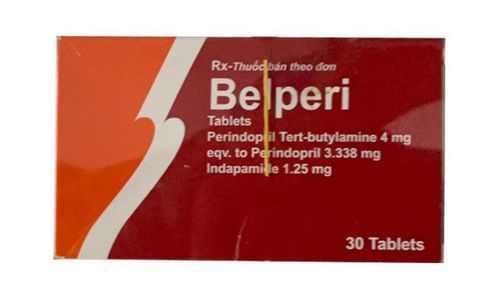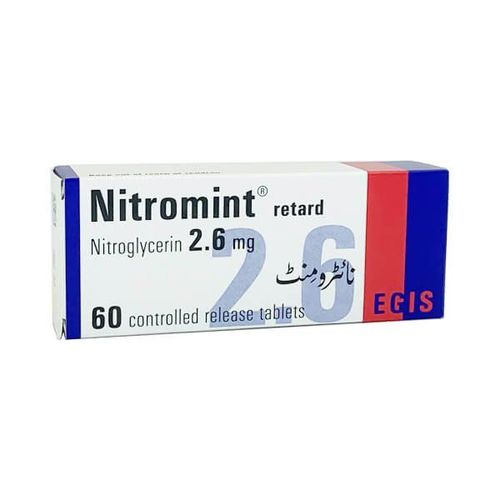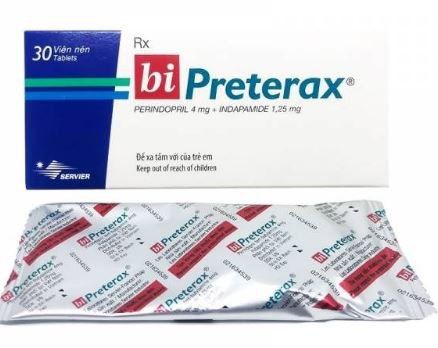This is an automatically translated article.
Perindopril is an angiotensin-converting enzyme inhibitor medicine used to treat high blood pressure to prevent strokes, heart attacks, and kidney problems. The following information will help patients better understand the pharmacological effects of the drug as well as the points to note when using the drug.1. What is perindopril? Mechanism of action of the drug?
Perindopril belongs to a group of drugs called angiotensin-converting enzyme (ACE) inhibitors, which work by relaxing blood vessels so blood can flow more easily. Perindopril will act through the action of the perindoprilat metabolite, which converts angiotensin I to angiotensin II which is a potent vasoconstrictor and promotes the growth of vascular smooth muscle cells and myocardium, and causes the breakdown of bradykinin, which is a potent vasoconstrictor. vasodilation.
In hypertensive patients, perindopril will reduce blood pressure by reducing systemic peripheral resistance, thereby increasing peripheral blood flow without affecting heart rate. The drug can dilate both arteries and veins. The patient's blood pressure can return to normal within 1 month and remains stable without exceeding the therapeutic effect of long-term treatment. Reflux did not occur upon discontinuation of treatment and the effect was maintained for 24 hours after a single dose.

Thuốc perindopril dùng trong bệnh lý tim mạch
2. What disease is perindopril used for?
As mentioned, perindopril is indicated for patients with hypertension, congestive heart failure or chronic ischemic heart disease (stable angina)
Contraindications of perindopril include:
Patients known hypersensitivity to perindopril Patients with a history of angioedema related to ACE inhibitors Pregnant or lactating women (depending on pregnancy and lactation)

Thuốc perindopril được chỉ định cho bệnh nhân tăng huyết áp
3. Dosage and administration of perindopril
Usage : Perindopril is usually taken once in the morning before a meal.
Dosage: 5 mg orally in the form of erbumine or arginine salt, respectively 4 mg perindopril erbumine.
Doses in specific cases needing attention include:
Patients with hypertension: The recommended dose is 4 mg of perindopril erbumin orally once in the morning, after 1 month of treatment can be increased to 8 mg of perindopril erbumin orally. 1 time per day. Elderly patients should start with 2 mg and then increase to 4 mg perindopril erbumine after 1 month of treatment. Patients with heart failure: Initiate treatment with 2 mg of perindopril erbumin orally once daily, the effective dose used in treatment is usually 2 to 4 mg of perindopril erbumin orally once a day. Patients with chronic ischemic heart disease: initial dose is 4 mg perindopril erbumin orally once daily for 2 weeks followed by 8 mg perindopril erbumin once daily if tolerated. Patients with renal impairment: Recommended Perindopril dose adjusted according to the degree of renal impairment as assessed by creatinine clearance.

Trước khi sử dụng thuốc, người bệnh cần tham khảo ý kiến của bác sĩ, dược sĩ
4. Adverse effects of perindopril
Common adverse effects of perindopril include:
Respiratory effects: Cough, not causing much discomfort usually just a dry cough, irritation pattern Skin effects: Localized skin rash Digestive effects : Causes non-specific gastrointestinal disturbances, taste disturbances, dizziness, cramps Neurological effects: Headache, sleep disturbances or asthenia Uncommon adverse effects include:
Dry mouth, any usually non-specific Hemoglobin is mildly decreased at initiation of treatment Transient hyperkalemia or elevation of urea, serum creatinine is reversible upon discontinuation of therapy Rare effects include angioedema of the face, lips, extremities, tongue or glottis, larynx.
Please dial HOTLINE for more information or register for an appointment HERE. Download MyVinmec app to make appointments faster and to manage your bookings easily.













